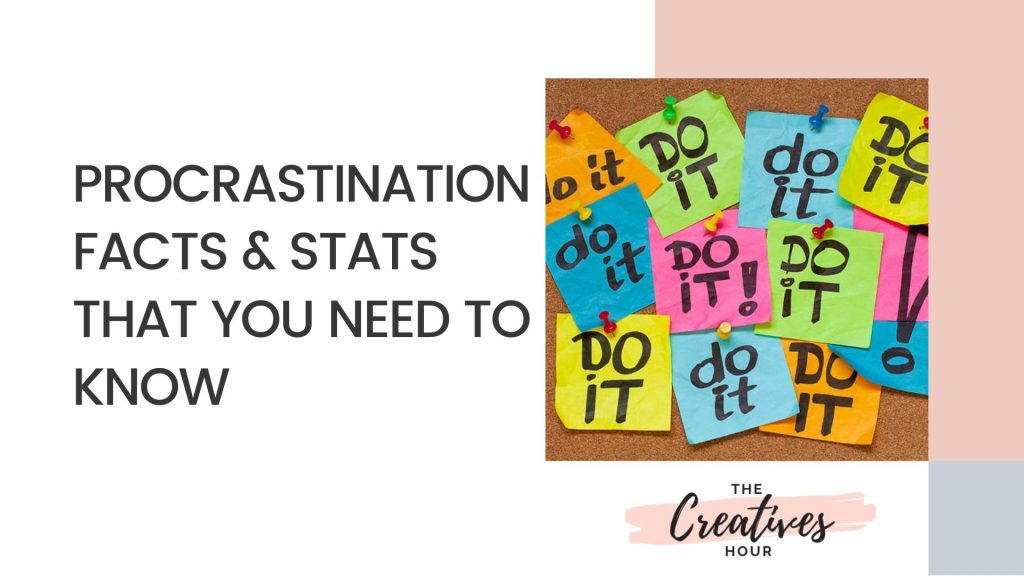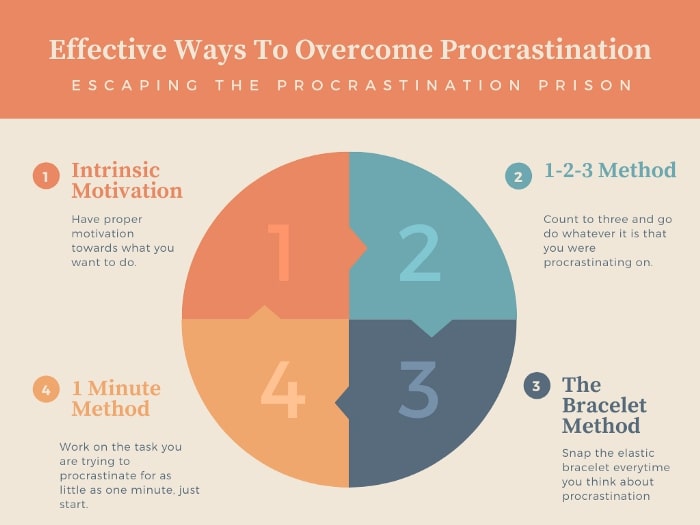
Feature Image Source: wikimedia commons
Procrastination is a common practice of putting off or delaying essential tasks until the last minute, or in some cases, past the deadline. According to some researchers, procrastination is an act where one fails to regulate their actions. It is characterized by an unncessery delay of tasks despite its negative consequences. Many people indulge in procrastination, from young school students to work professionals. Here are some statistics and facts about procrastination, procrastination at the workplace, and ways to overcome the same.
General Stats of Procrastination
- 20% of individuals identify themselves as chronic procrastinators as per research by Dr. Joseph Ferrari.
- According to a study by StudyMode Student Psyche Report, distraction was found to be the most common reason for procrastination (48 percent). This is followed by feeling overwhelmed and unable to decide where to start (40 percent).
- An article by Balkis and Duru stated several other reasons for procrastination, including
- poor time management,
- lack of organizational skills and motivation,
- inability to concentrate on work,
- anxiety, and fear related to failure,
- unrealistic expectations and personal problems,
- negative beliefs about one’s capabilities,
- perfectionism
- A brief study by Dr. Ferrari and Díaz-Morales concluded that long-term procrastination can affect physical and mental health. This is due to ineffective coping mechanisms, greater perceived stress, and the absence of essential adjustment behaviors.
- Sean Clark lists out four types of procrastinators:
- the lucky optimists who believe everything shall work out and it often does;
- the overloaded who have too much on their plate and end up failing at the task;
- the pleasure-seeking avoider who avoid the painful tasks to enjoy pleasure at present; and
- the perfectionist who tend to avoid starting or finishing a task.
Procrastination at Workplace
A study conducted by Darius Foroux on 2219 people revealed that around 88% of the workforce tend to procrastinate at least one hour a day. Further, it stated that a person earning $40k a year wastes 15,000 dollars by procrastinating three hours a day.

Source: dariusforoux.com
According to a study by Metin, Peeters, and Taris, there is a negative relationship between performance at work and procrastination. Thus, spending excessive time on non-work activities while at work (such as engaging in gossip, reading blogs, instant messaging, etc.) could affect the performance negatively, either by depleting the quality or the quantity of work done.
Apart from “Classic Procrastination” where you consciously choose to avoid the tasks that you should be doing, Rory Vaden identifies another subtler form of procrastination called “Priority Dilution”. It occurs when “you delay on the day’s most important tasks by allowing your attention to shift to less important but perhaps more urgent activities”.
If you have identified yourself as a procrastinator, the following section will help you overcome the same.
Overcoming Procrastination
The first step one should take to overcome procrastination is forgiving themselves for procrastinating. In a study by Pychyl and others, forgiving oneself led to reduced procrastination during the next task. Forgiving helps reduce negative feelings of guilt, which are one of the primary triggers of procrastination in the first place.
Another popular tip is to prioritize your tasks based on urgency and importance. This can be achieved using the Eisenhower Matrix. It helps you to identify the most immediate tasks while leaving the rest for later or not doing them at all.
An article by Noah Merriby Lists some techniques of conditioning your brain to avoid procrastinating.
- The 1-2-3 Method: If you find yourself procrastinating, count to three and start doing what you have to do. This way, your brain is conditioned to eliminate procrastination every time you do this count.
- The 1 Minute Method: If you are procrastinating on a task, force yourself to work on it just for a minute. Usually, this acts as the start that one needs and makes finishing the work way easier.
- The Bracelet Technique: For this technique, have an elastic bracelet on your wrist. This method trains your behavior to match your goals. Whenever you find yourself procrastinating, snap the elastic bracelet on your wrist—this associated physical pain with negative thoughts of delaying work. Finally, once you finish your work, reward yourself. This method is one of the most effective ways of overcoming procrastination, as suggested by Merriby.

Source: Noah Merriby
You can also check out some online courses or podcasts for actionable advice to beat procastination.
10 Other Interesting Procastination Facts & Statistics
- Procrastination chronically affects 15%–20% of adults, and that approximately 25% of adults consider procrastination to be a defining personality trait for them. (Source – APA PsycNet)
- According to a 2020 study in the International Journal of Applied Positive Psychology, people who practiced even brief mindfulness exercises were more likely to stay on task. (Source – Nationalgeographic)
- Procrastination may be situational for some people. However, for about 20% of adults around the world, procrastination is habitual, and thus, chronic. (Source – Choosing Therapy)
- Recently, ‘revenge bedtime procastination’ has emerged as a common form of procastination where people go to bed later than intended while no external circumstances are accountable for doing so” — that is, choosing to delay bedtime without a practical reason for this delay. (Source – MedicalNewsToday)
- The chance of severe bedtime procrastination is more than twice as high for females than for males. (Source – MedicalNewsToday)
- People who procrastinate are more likely to have problems with sleep. (Source – MedicalDaily)
- Higher procrastination rates are linked to lower employee income and shorter employment periods. (Source – Brenda Ngyuyen)
- A single point increase in procrastination on a 5-point scale is associated with approximately a $15,000 drop in salary and 322 fewer days of employment. (Source – Brenda Ngyuyen)
- Between 70 and 95% of university students procrastinate occasionally, and 20-40% do so chronically. (Source – econpapers)
- Self-regulation, as a close companion of procrastination (Sirois and Pychyl, 2013), has also been proved to affect people’s wellbeing (De Ridder and Gillebaart, 2017). Self-regulation also appears to be a key factor to ameliorate the negative effect of procrastination.
Final Thoughts
Now it’s time for you to use these stats and facts to identify the type of procrastinator you are and begin overcoming the same. It would not only enhance your productivity and performance at work but would help regain the losses you made while procrastinating. If you need more help, check out these research based strategies for overcoming procrastination.

